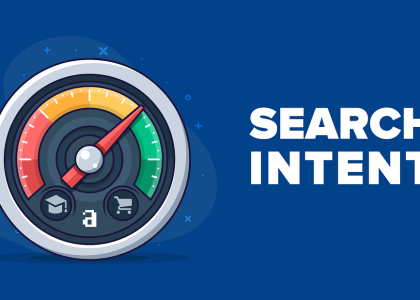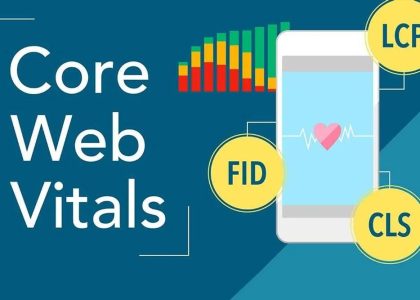In the highly competitive digital ecosystem of New York City, website optimization is not just about aesthetics—it’s a complex, data-driven process that involves cutting-edge technical strategies. A slow, unoptimized website can result in higher bounce rates, lower conversions, and poor search rankings, all of which directly impact business revenue.
This guide delves into advanced and technical website optimization strategies to improve search visibility, enhance user experience, and drive business growth. By implementing the latest performance enhancements, security protocols, and AI-driven analytics, NYC businesses can stay ahead of the competition.
The Importance of Website Optimization for NYC Businesses
Impact on Search Engine Rankings and Visibility
A well-optimized website plays a crucial role in securing high rankings on search engines like Google. Search engine algorithms prioritize sites that provide fast load times, mobile responsiveness, and excellent user experience. Websites that fail to meet these standards are pushed down in search results, making them less discoverable by potential customers.
Enhancing User Experience to Reduce Bounce Rates
User experience (UX) is a critical factor in retaining visitors. Slow-loading pages, poor navigation, and unresponsive design contribute to high bounce rates, meaning potential customers leave before engaging with the content. By optimizing speed, implementing intuitive UI/UX designs, and ensuring seamless navigation, businesses can keep users engaged and improve conversion rates.
Increasing Conversion Rates Through Better Performance
A slow or inefficient website can lead to lost revenue. Website optimization directly influences how effectively visitors interact with content, fill out forms, and make purchases. Faster load times, clear calls to action (CTAs), and optimized checkout processes encourage visitors to complete desired actions, leading to higher sales and engagement.
Technical SEO Strategies for Maximum Performance
Enhancing Website Speed with Advanced Techniques
Website speed is one of the most important ranking factors in search engines. A faster website enhances the user experience and leads to better engagement.
Critical Rendering Path Optimization
The critical rendering path refers to the sequence of steps the browser takes to render a webpage. Optimizing this process by minimizing render-blocking resources, prioritizing above-the-fold content, and deferring non-essential JavaScript can significantly enhance loading speeds.
Resource Preloading and Prefetching
By using preloading and prefetching techniques, businesses can instruct browsers to load critical assets in advance. This helps reduce wait times and ensures a smooth browsing experience. Implementing <link rel=”preload”> for critical resources and <link rel=”prefetch”> for assets that may be used in future interactions can optimize resource loading efficiency.
Optimizing JavaScript and CSS Execution
Excessive JavaScript execution time can delay page rendering. Techniques such as asynchronous JavaScript loading, deferred script execution, and minifying CSS and JavaScript files reduce processing overhead and enhance page performance.
Optimizing Core Web Vitals for Better Rankings
Improving Largest Contentful Paint (LCP)
LCP measures the time it takes for the largest visible element on a page to load. Reducing LCP involves optimizing hero images, eliminating render-blocking resources, and leveraging server-side rendering (SSR) to ensure quick delivery of primary content.
Reducing First Input Delay (FID)
FID measures the time from when a user first interacts with a page to when the browser responds. Reducing JavaScript execution time, implementing code splitting, and minimizing main-thread activity help improve FID.
Enhancing Cumulative Layout Shift (CLS)
CLS measures unexpected layout shifts that disrupt the user experience. Ensuring that all images, ads, and embeds have defined width and height attributes and preloading fonts prevents layout instability.
Mobile Optimization for a Seamless Experience
Implementing Accelerated Mobile Pages (AMP)
AMP technology enhances mobile site performance by loading pages nearly instantly. Using AMP allows businesses to provide a seamless mobile browsing experience and improve mobile search rankings.
Enabling Lazy Loading for Efficient Resource Management
Lazy loading ensures that images and media files are only loaded when they are needed, reducing unnecessary bandwidth consumption and improving page speed.
Adopting Progressive Web Apps (PWAs)
PWAs combine the best features of mobile apps and websites, offering faster load times, offline accessibility, and push notification capabilities to enhance user engagement.
AI-Driven Content and SEO Strategies
Leveraging AI for Keyword Research and Content Optimization
AI-Powered SEO Tools for Enhanced Content Strategy
Traditional keyword research is no longer sufficient for maintaining search visibility. AI-powered tools such as Surfer SEO, Clearscope, and MarketMuse analyze search intent and competition to provide actionable insights for content optimization.
Natural Language Processing (NLP) and Semantic Search
Google’s search algorithms increasingly rely on NLP and semantic search. Optimizing content for context rather than individual keywords ensures better alignment with search engine ranking factors.
Implementing Advanced Schema Markup for Visibility
Using Product Schema for E-commerce Visibility
E-commerce businesses can improve search rankings by implementing Product Schema, which provides detailed product information directly in search results.
Enhancing Local Search with LocalBusiness Schema
Local businesses can increase visibility in NYC by using LocalBusiness Schema to provide accurate location details, operating hours, and contact information.
Conversion Rate Optimization and User Engagement
Personalizing User Experience with AI-Driven Strategies
Dynamic Landing Pages for Higher Engagement
Personalized landing pages adjust content based on user demographics and browsing behavior, increasing conversion rates.
Machine Learning for Predictive User Behavior
By analyzing user behavior, machine learning algorithms can tailor content, CTAs, and product recommendations, improving engagement and sales.
Using Heatmaps and A/B Testing for Performance Enhancement
Heatmap Analysis for UX Improvements
Tools like Hotjar and Crazy Egg provide heatmap analytics that reveal user interaction patterns, helping businesses identify friction points and optimize design elements.
A/B Testing for Optimal Conversion Rates
By testing different variations of a webpage, businesses can determine which elements drive the best performance and make data-driven decisions to maximize conversions.
Implementing Advanced Local SEO Techniques for NYC Businesses
Optimizing Google Business Profile for Local Search
A well-optimized Google Business Profile ensures businesses appear in local search results and Google Maps, increasing visibility among NYC customers.
Geo-Fencing Marketing for Hyperlocal Targeting
Geo-fencing allows businesses to target mobile users within a specific geographic area, enabling highly localized marketing campaigns.
Voice Search Optimization for Conversational Queries
As voice search grows in popularity, optimizing content for conversational queries ensures businesses capture relevant traffic from voice-enabled searches.
Security and Performance Enhancements
Strengthening Website Security with Advanced Protocols
Implementing Content Security Policy (CSP) to Prevent Cyber Threats
CSP prevents cross-site scripting (XSS) attacks by restricting the types of content that can be loaded on a website, protecting user data and website integrity.
Encrypting Data with TLS 1.3 for Secure Transmission
TLS 1.3 encryption ensures that all sensitive information is securely transmitted between the user and the server, preventing data breaches and unauthorized access.
Utilizing AI-Based Anomaly Detection for Performance Monitoring
Continuous Website Monitoring with AI-Powered Tools
AI-driven monitoring tools such as Google Lighthouse and PageSpeed Insights provide real-time insights into website performance, helping businesses detect and resolve issues quickly.
Real-Time Alert Systems for Security Threats
Implementing real-time alerts helps businesses identify unusual traffic patterns and potential security threats, ensuring proactive protection against cyberattacks.
How Robust Connections Can Help
Robust Connections specializes in advanced website optimization strategies that drive measurable results. Whether you need technical SEO improvements, AI-driven analytics, or conversion rate optimization, our team ensures your website performs at its peak.
We implement the latest Core Web Vitals optimizations, provide AI-driven content strategies, and deploy cutting-edge security measures to keep your business ahead of the competition. By leveraging our expertise, NYC businesses can achieve higher rankings, improved user engagement, and increased revenue.
Take Your Website to the Next Level
Don’t let an underperforming website hold your business back. Partner with Robust Connections for comprehensive website optimization tailored to your industry. Our experts are ready to enhance your search visibility, site speed, and security to maximize your conversions.
Contact Robust Connections today and transform your website into a powerful growth engine!
Conclusion: Future-Proofing Your NYC Business with Website Optimization
Website optimization is essential for achieving higher search rankings, improved user experience, and increased conversions. By adopting technical SEO best practices, leveraging AI-driven strategies, and implementing robust security measures, NYC businesses can maintain a competitive edge in an ever-evolving digital landscape.






